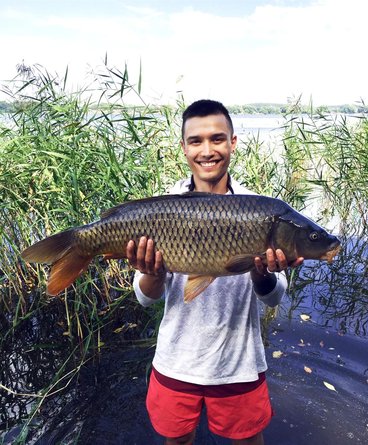
Researchers looking to control invasive carp spread with disease
POMME DE TERRE LAKE, Minn. — Finding ways to control the common carp in Minnesota lakes has been an issue that researchers have looked at for years. Now, another virus specific to the common carp is killing some of the invasive fish, including in lakes within the Pomme de Terre River system locally.
Isaiah Tolo is a graduate assistant from the University of Minnesota Aquatic Invasive Species Research Center funded by the Legislative‐Citizen Commission on Minnesota Resources.
Tolo collected tissue samples from stressed carp from Pomme de Terre Lake in Grant County this spring. The fish were confirmed to have the Carp Edema Virus (CEV) Disease. Carp have been affected by the disease in Lake Christina in Douglas County, along with local waters of Pomme de Terre, Ten Mile and Barrett Lakes.
“On Pomme de Terre, I estimated that there were around 4,000 fish that died in that mortality event,” Tolo said. “That might be a third (of the carp population), or depending on what the density of that population is, it could be a significant fraction of what’s in that lake.”
Dying carp appearing in Pomme de Terre River system
Dead and dying carp are appearing in some lakes within the Pomme de Terre River system, according to the Minnesota Department of Natural Resources.
Researchers from the University of Minnesota Aquatic Invasive Species Research Center (MAISRC) recently collected tissue samples from stressed carp in Pomme de Terre Lake and confirmed that the fish kill was attributed to Carp Edema Virus Disease (CEVD). Carp continue to be affected in Lake Christina and Pomme de Terre, Ten Mile and Barrett lakes in Grant, Douglas and Otter Tail counties. Additional mortality is anticipated in other lakes with warming water and spawning concentrations. CEVD is a virus specific to common carp and can cause high mortality rates in wild and cultured varieties, including koi.
Information regarding carp-exclusive fish kill in Waterville area
Hi all, we and several DNR offices have been getting inundated with calls regarding Lake Frances in the city of Elysian. There has been a carp-exclusive fish kill ongoing in the lake for the past two to three weeks. That being the case it is prudent to send this out to all our Waterville Fisheries Newsletter contacts to make you aware of the situation and so you have a better understanding of carp only kills.
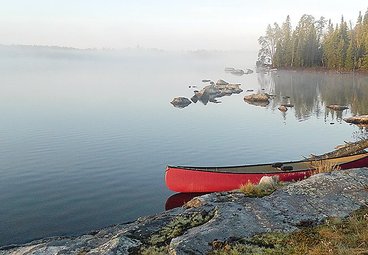
Coalition brining AIS fight to Boundary Waters
REGIONAL—In the fight against aquatic invasive species, lake associations in Minnesota have often been leading the way. Organizations like the Vermilion Lake Association or the White Iron Chain of Lakes Association, are two organizations that have played a significant role in educating lake users, developing inspection programs, and lobbying for resources.
But what about the nearly 1,600 uninhabited lakes found within the 1.1 million-acre Boundary Waters Canoe Area Wilderness? Who is advocating to protect those lakes from the risks posed by aquatic invasives?
Outbreak at Lake Francis kills invasive carp
ELYSIAN, Minn. (KEYC) — Dead carp are washing up on the shores of Lake Francis near Elysian and the Minnesota Department of Resources says a virus is a culprit.
The DNR says the virus, called carp edema virus (CEV), may have been introduced to the lake by other invasive species but isn’t cause for concern.
New virus leads to carp kill on Lake Francis
ELYSIAN — A new carp-killing virus has made its way to Lake Frances.
Carp edema virus has been monitored by the Department of Natural Resources since 2017, and CEV appears to be the root of the lake’s common carp kill during the past several weeks.
CEV also has been the cause of several other carp kills in Minnesota over the last several years, and there have already been three cases of it in the state this year.

Enzyme-based coatings developed at the University of Minnesota help protect port infrastructure by disrupting the signals underwater bacteria use to communicate.
In any seaport or freshwater marina around the world, just beneath the surface, and you’ll find an ongoing battle between the boats, docks, bridges—anything made of steel—and a cast of aquatic bacteria in search of a submerged surface to call home. The biocorrosion created by these bacterial hitchhikers is especially dire in cold climates where winter brings the added wear and tear of scraping ice. And Duluth-Superior Harbor is ground zero, as aquatic bacteria corrode nearly 50,000 pounds of steel there each year.
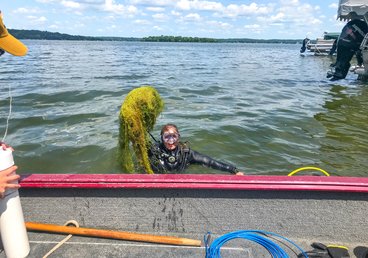
The DNR is actively engaged in several invasive carp partnerships and prevention efforts: The DNR is an active partner in the Upper Mississippi River Invasive Carp Workgroup. The group includes representatives from Minnesota, Wisconsin, Iowa, Illinois, M
DULUTH, Minn. — The news at times seems all bad when it comes to aquatic invasive species in the Northland.
Every year more lakes are infested with zebra mussels, starry stonewort, spiny water fleas, Eurasian water milfoil and more. Asian carp are moving up the Mississippi River system, and snakehead fish — that breathe out of water and can move on land — aren’t far away.
Aquatic invasive species, or AIS, have saturated some of our most popular waters, like Mille Lacs, Winnibigoshish, Lake of the Woods and the St. Louis River estuary. It seems just about every lake and river now has some sort of invader. And it seems inevitable that even the lakes that don’t have them will get them soon.
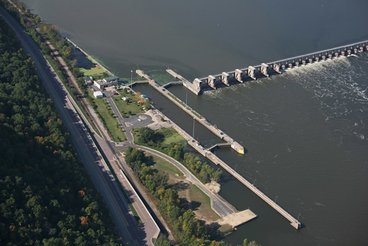
More than 50 invasive carp pulled from Mississippi River
LA CROSSE, Wis. — The Minnesota Department of Natural Resources (DNR) is about to embark on a large scale netting operation after more than 50 invasive carp were caught by commercial fishing operators on the Mississippi River.
DNR fisheries agents say the invasives were pulled from the river in southeastern Minnesota near La Crosse and Trempealeau, Wisconsin during routine netting operations last weekend.
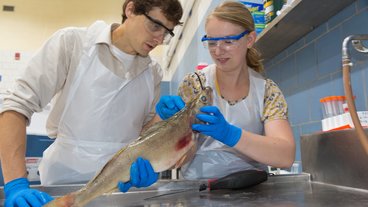
Solution for a scourge? University of Minnesota scientist is progressing with carp-killer tool
Sam Erickson followed his love of science to outer space one summer during an internship at NASA. He came away fascinated by seeing into deep space by interpreting interaction between matter and infrared radiation.
Now a full-fledged researcher at the University of Minnesota’s College of Biological Sciences, the 25-year-old Alaska native is immersed in something far more earthly: killing carp. His fast-moving genetic engineering project is drawing attention from around the country as a potential tool to stop the spread of invasive carp.
